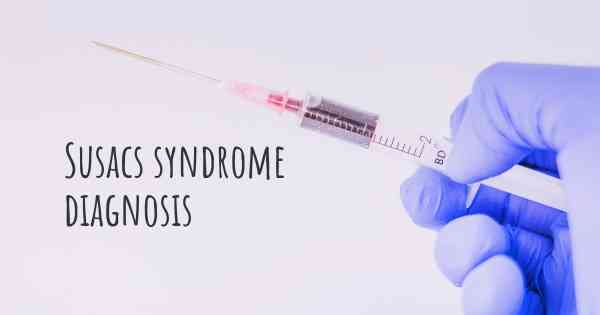How is Susacs syndrome diagnosed?
See how Susacs syndrome is diagnosed. Which specialists are essential to meet, what tests are needed and other useful information for the diagnosis of Susacs syndrome

Susac's syndrome is a rare autoimmune disorder that affects the small blood vessels in the brain, retina, and inner ear. It primarily affects young women between the ages of 20 and 40, although cases have been reported in both men and children. The syndrome is characterized by a triad of symptoms: encephalopathy (brain dysfunction), branch retinal artery occlusion (blockage of blood vessels in the retina), and sensorineural hearing loss.
Diagnosing Susac's syndrome can be challenging due to its rarity and the overlap of symptoms with other conditions. However, a comprehensive evaluation involving various medical specialists can help in reaching an accurate diagnosis. The diagnostic process typically involves the following:
1. Medical History and Physical Examination:
The first step in diagnosing Susac's syndrome is a detailed medical history and physical examination. The doctor will inquire about the patient's symptoms, their duration, and any previous medical conditions. They will also perform a thorough physical examination to assess neurological function, vision, and hearing.
2. Neurological Evaluation:
Since Susac's syndrome primarily affects the brain, a neurological evaluation is crucial. This evaluation may include tests to assess cognitive function, memory, coordination, reflexes, and balance. The doctor may also look for signs of encephalopathy, such as confusion, personality changes, or seizures.
3. Ophthalmic Examination:
Given that Susac's syndrome involves retinal artery occlusion, an ophthalmic examination is essential. This examination may involve visual acuity tests, examination of the retina using an ophthalmoscope, and fluorescein angiography to assess blood flow in the retinal blood vessels. The presence of characteristic branch retinal artery occlusions can be indicative of Susac's syndrome.
4. Audiological Evaluation:
As sensorineural hearing loss is a common symptom of Susac's syndrome, an audiological evaluation is necessary. This evaluation may include pure-tone audiometry, speech audiometry, and other tests to assess the patient's hearing ability. The results can help determine the extent and nature of the hearing loss.
5. Brain Imaging:
Imaging studies of the brain can provide valuable insights into the presence of abnormalities associated with Susac's syndrome. Magnetic resonance imaging (MRI) is commonly used to visualize the brain and detect any signs of inflammation, ischemia (lack of blood flow), or lesions. The characteristic findings in Susac's syndrome include small, scattered areas of white matter damage known as "snowball lesions."
6. Angiography:
Angiography is a diagnostic procedure that involves injecting a contrast dye into the blood vessels to visualize their structure and blood flow. In Susac's syndrome, fluorescein angiography or indocyanine green angiography may be performed to examine the retinal blood vessels. The presence of occlusions or "corkscrew" patterns in the arteries can be indicative of Susac's syndrome.
7. Blood Tests:
While there is no specific blood test to diagnose Susac's syndrome, certain laboratory tests can help rule out other conditions and support the diagnosis. These tests may include autoimmune markers, such as antinuclear antibodies (ANA), anti-double-stranded DNA (anti-dsDNA) antibodies, and anti-phospholipid antibodies.
8. Biopsy:
In some cases, a biopsy may be necessary to confirm the diagnosis of Susac's syndrome. A small tissue sample, typically from the skin or affected organs, is examined under a microscope to look for characteristic changes associated with the syndrome. However, biopsies are not always required and are usually reserved for atypical or challenging cases.
It is important to note that Susac's syndrome is a diagnosis of exclusion, meaning other potential causes of the symptoms must be ruled out before confirming the syndrome. The combination of clinical findings, imaging studies, and specialized evaluations is crucial in making an accurate diagnosis.
Early diagnosis and prompt treatment are essential in managing Susac's syndrome and preventing long-term complications. If Susac's syndrome is suspected, it is crucial to consult with a team of medical professionals, including neurologists, ophthalmologists, and audiologists, who are experienced in diagnosing and managing this rare condition.








